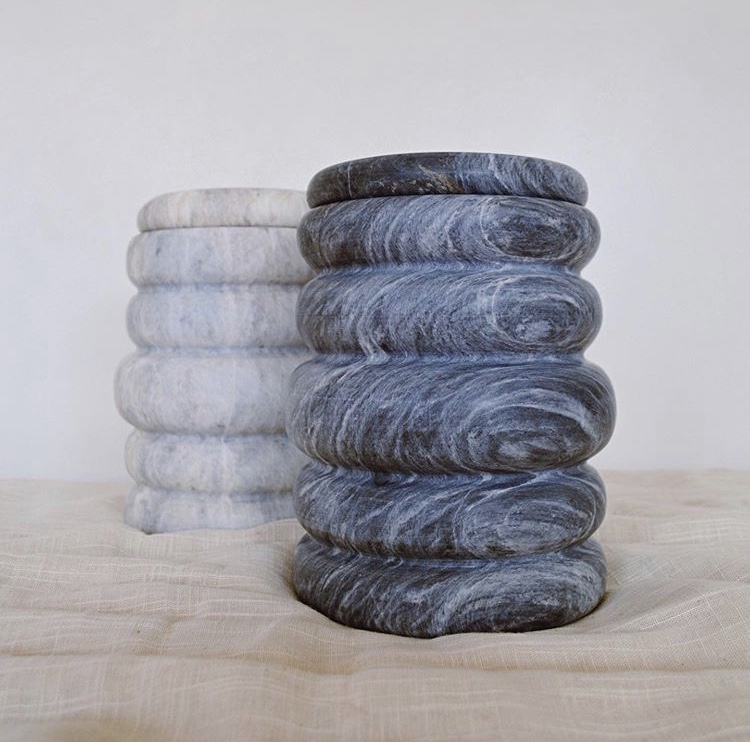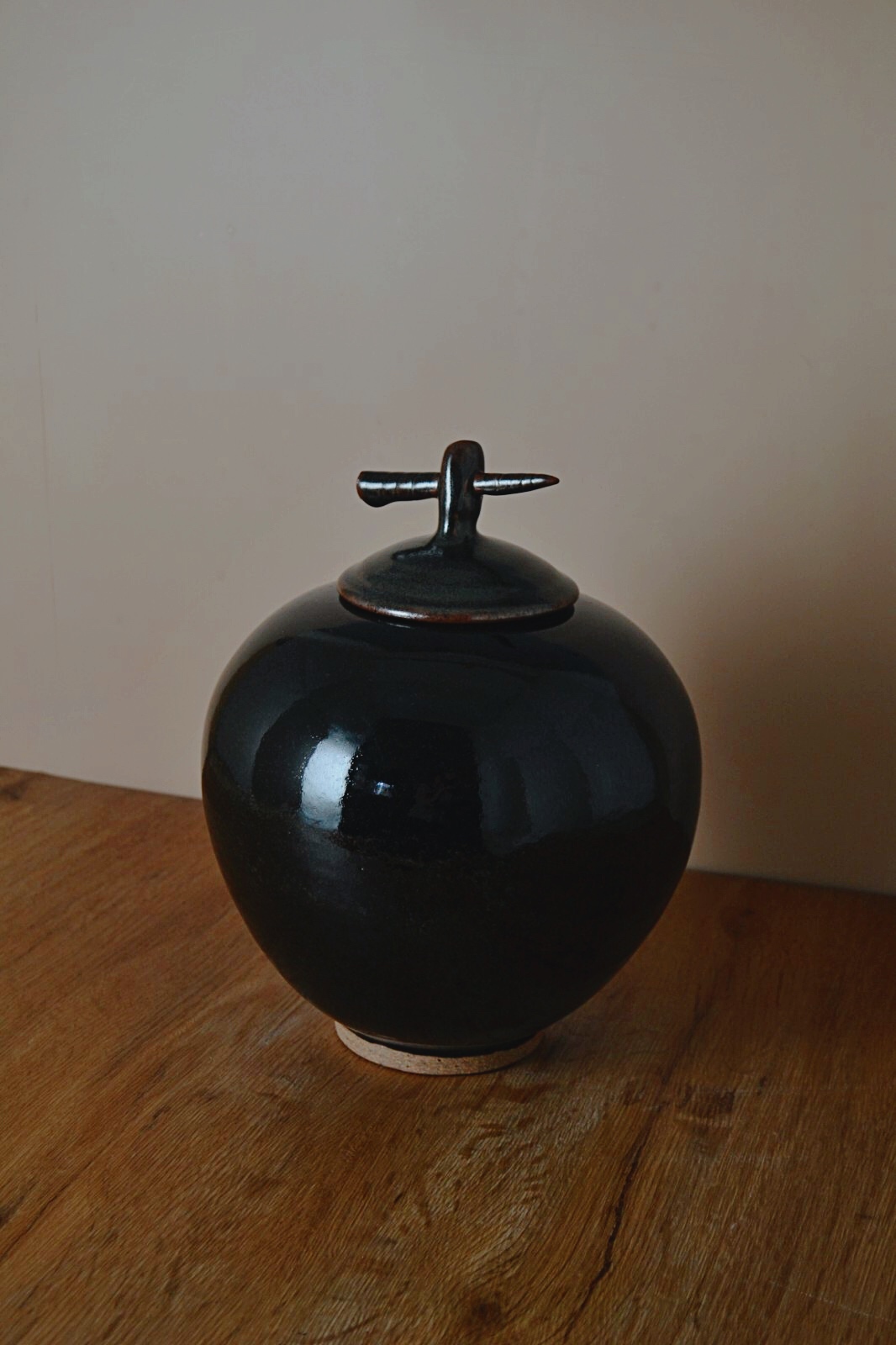Bea Ledesma is the group publisher of Hinge Inquirer and…
Camille Ayala and Eber Sy are making urns for aesthetes.
The duo, former marketing people who wanted to explore the funeral business, developed urns for their company Samsara. “The name was based on Hinduism,” Camille Sy says. “Samsara, in Hindi, means the cycle of life.”
“We feel like the death industry is an overlooked industry,” she observes. “Not that there aren’t any businesses that offer good service or products, but in general it’s not the most approachable industry so there are only a few players.”
Camille and Eber developed a line of urns, made of stone, clay and marble, to speak to an audience that prioritizes aesthetics. “We want to target the new generation of consumers who are socially aware, practical and who put value in the design, quality and sustainability efforts [of a product].”
“What we wanted to do with Samsara was offer meaningfully designed urns without sacrificing functionality, quality and affordability,” she says. Their Instagram is all soothing colors and gently curved lines, a reflection of the interior design trends sweeping the platform.
The urns wouldn’t look out of place in a trendy household, whether it’s decked in Gen-Z yellow or vintage furniture. One piece, called the Nur, has the same curves as the Michelin man, only cast in marble. An IG post describes it thus: “Inspired by the ripples of the sea, the Nur urn is made by master sculptors to mimic the motion of the water that ebbs and flows.” It wouldn’t look out of place next to an Afra and Tobia Scarpa Cassina sofa or a Percival Lafer piece. “It’s like picking a house for myself,” Camille remarks, “I want something that mirrors my personality.”
The brand’s founders have shrewdly perceived the booming death industry as a business vertical with plenty of growth prospects. “The pandemic was an opportunity for us to create this business right now because if it weren’t for the growing need for urns—which is unfortunate—we wouldn’t have started the business nor [would] it be what it is now,” she says.
Do you have any experience in the death industry?
Eber Sy: It’s our first time dabbling in the death industry—we saw a need and went for it. Both of us have business degrees and worked in marketing where we designed brand merchandise and digital promotional materials. After quitting the corporate world, we explored the jewelry and gift business. Designing urns is completely new to us but our experience with designing jewelry helped us in terms of keeping practicality and feasibility in mind when designing a functional item.

So the pandemic was the impetus for this business? How did you arrive at urns?
Camille Ayala: The end goal was to open a full service funeral company. However, because of the pandemic, we anticipated a recession.
We remembered a news article claiming that cremation became a necessity due to the pandemic, so while we know that most Filipinos prefer caskets, there might be a growing market for urns. We thought to ourselves, in what way can we contribute to the community? We checked the [products] available in the market and found that they all look alike and that’s where we found our answer. The idea of creating meaningfully designed urns was born. We wanted to offer urns that differ from the ones being sold on the market: urns created with thought and empathy, urns which are sustainable.

Samsara’s urns range from P9,600 to P20,000. This is the Raja ceramic urn (P14,200).
Why stone, clay and marble in particular?
Camille: We’re very picky with the manufacturers we work with so the three different collections [are] a result of being able to find partners who could materialize our vision. We’re planning to add more varieties as we want to be as inclusive as possible.
If you were to pick an urn for yourself, what would you choose?
Eber: The Giri urn from the Clay Haven collection. It takes me back to my travels abroad when [I would see] a lot of really nice churches and domes.
Camille: I’d pick the Dama urn from the Stone Haven collection. When I think about resting inside [this] urn, I feel content and at peace. It’s like picking a house for myself, I want something that mirrors my personality.

What’s the going rate for urns?
Eber: For urns in top-tier funeral homes, prices can range from P15,000 to P80,000, depending on the material, while Samsara’s urns range from P9,600 to P20,000.
What were your design references?
Camille: Our designs [are for] the departed as they will be using the urn, so we think of it as designing a house for a specific person. Which is why our references are interior and architecture design principles we picked up from documentaries, books and observations from our travels. We also looked at luxury resorts as the experiences they offer are curated and designed to evoke calmness and tranquility and that’s what we want to achieve with our designs.

Is there a practice of keeping urns within the home here? Do you see a future where decorative urns will have a place inside the Filipino household?
Eber: Since we are a predominantly Catholic country, we follow the guidelines of the church. If you take a look at the history of cremation, it wasn’t until the 1960s that the Vatican allowed cremation. They released guidelines stating that urns should not be kept at home which leads us to believe that most Filipinos don’t [follow this] practice. Meanwhile in other countries like the US, it is not a taboo practice to keep their loved ones’ urns at home.
In terms of a future where decorative urns will have a place inside the Filipino household, this really depends on the belief of the person since people have different practices and we do not want to discriminate based on religion or beliefs.
* * *
You can purchase Samsara’s urns at their site.
Photos courtesy of Samsara
Get more stories like this by subscribing to our weekly newsletter here.
Read more:
If you need help explaining death to your kids, ‘Over the Moon’ can offer some assistance
This new decluttering trend may be a little morbid but handy
Writer: BEA LEDESMA
Bea Ledesma is the group publisher of Hinge Inquirer and a columnist for the Philippine Daily Inquirer. She has a dog named George, and spends much of her leisure time photographing him while he naps. You can see more of her dog photos on her Instagram @bealedesma.




